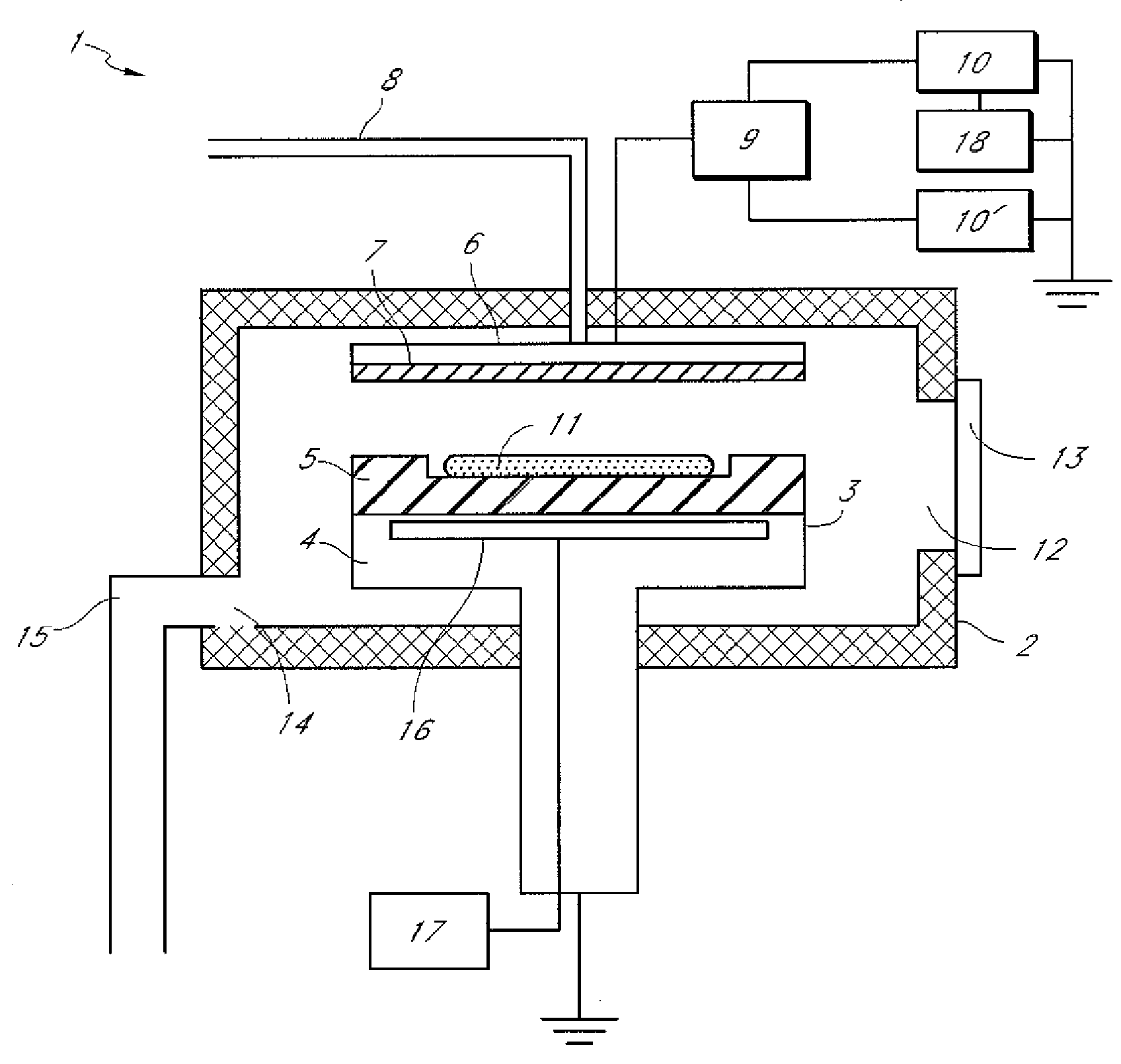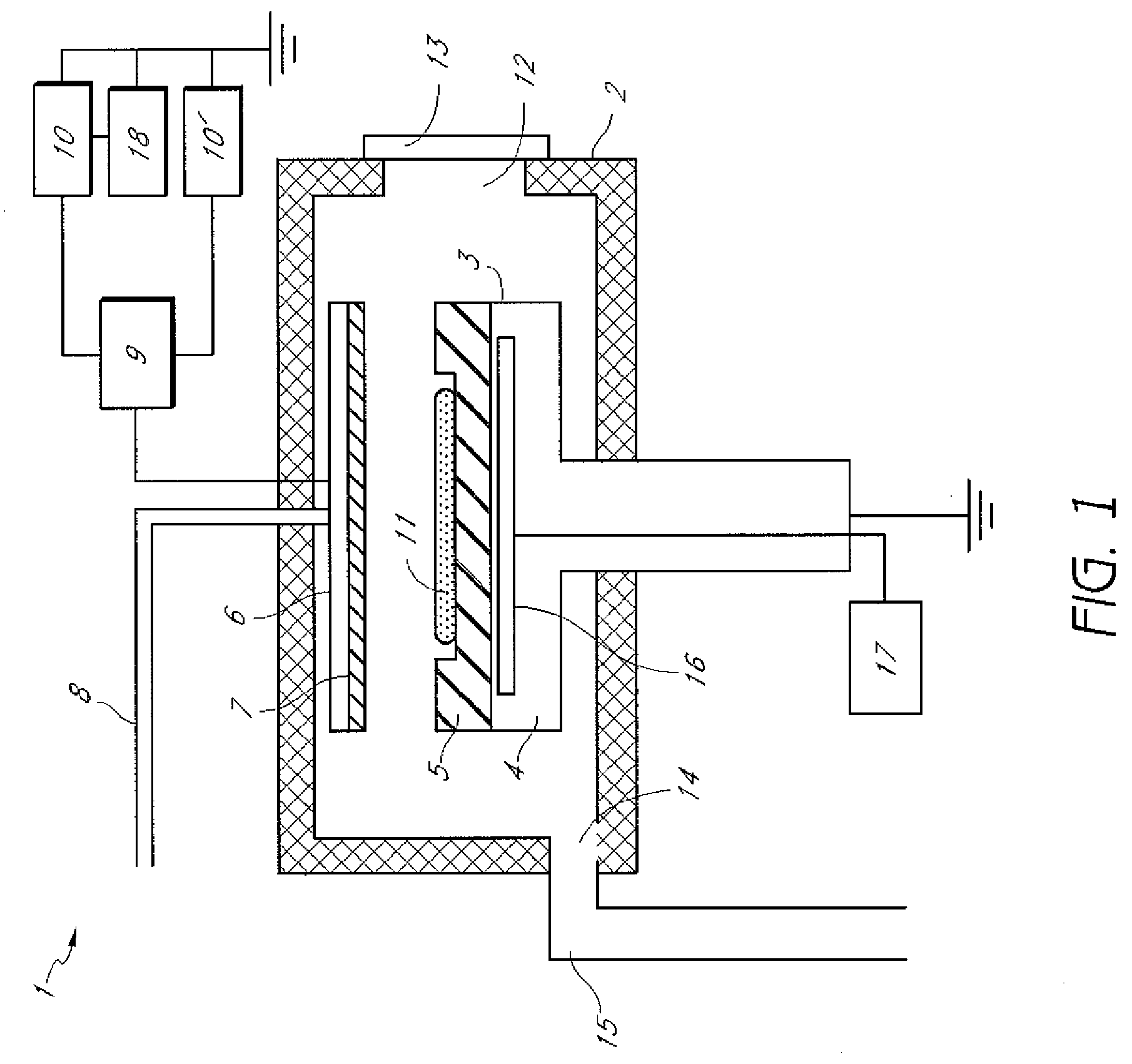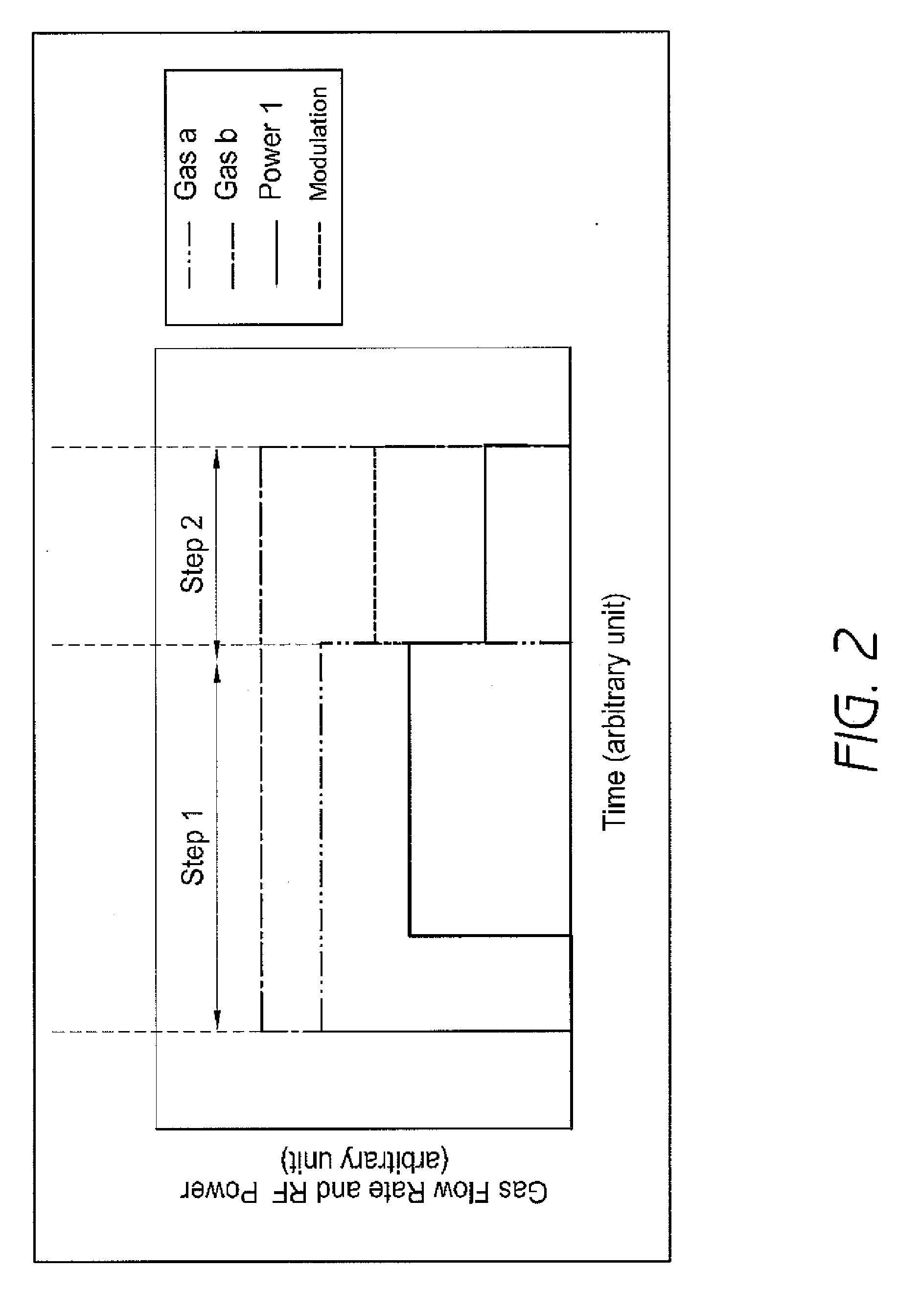Method of plasma treatment using amplitude-modulated RF power
- Summary
- Abstract
- Description
- Claims
- Application Information
AI Technical Summary
Benefits of technology
Problems solved by technology
Method used
Image
Examples
example 1
[0062]The best mode for carrying out the present invention is explained below by referring to FIG. 2.
[0063]Step 1 indicates a film forming process or film termination treatment process, while step 2 indicates a process of removing electric charges by means of modulation. In the figure, gas a indicates a reaction gas, while gas b indicates an additive gas. Both the vertical and horizontal axes represent arbitrary units, and changes along each axis are not scaled. Modulation is expressed by an on / off state.
[0064]The reaction gas is stopped and only the additive gas is supplied after the film forming process or film termination process has completed, and if RF power of 430 kHz is used, then application of the 430-kHz RF power is stopped and RF power of 13.56 MHz alone, which has been adjusted to 20 W, is applied for approx. 3 seconds at a constant electric power to cause discharge. At this time, the RF power is amplitude-modulated at a modulation frequency of 5 kHz and amplitude modula...
example 2
[0066]Another example of the present invention is explained below by referring to FIG. 3.
[0067]Step 1 indicates a film forming process or film termination treatment process, while step 2 indicates a process of removing electric charges by means of modulation. In the figure, gas a indicates a reaction gas, while gas b indicates an additive gas.
[0068]The reaction gas is stopped and only the additive gas is supplied after the film forming process or film termination process has completed, and if RF power of 430 kHz is used, then application of the 430-kHz RF power is stopped and RF power of 13.56 MHz alone is applied for approx. 3 seconds.
[0069]At this time, the RF power is amplitude-modulated at a modulation frequency of 5 kHz and amplitude modulation ratio of 1, and the electric power is gradually decreased from the same level used during the film forming process in such a way that the electric power becomes 0 W when the process ends (the electric power is decreased linearly).
[0070]I...
example 3
[0071]Although the electric power is gradually decreased in Example 2 given above, the voltage may be lowered in several steps as shown in FIG. 4, or the rate at which the voltage is lowered may be changed in each of these steps. It is also possible to combine Examples 1, 2 and / or 3.
PUM
| Property | Measurement | Unit |
|---|---|---|
| Time | aaaaa | aaaaa |
| Time | aaaaa | aaaaa |
| Power | aaaaa | aaaaa |
Abstract
Description
Claims
Application Information
 Login to View More
Login to View More - R&D
- Intellectual Property
- Life Sciences
- Materials
- Tech Scout
- Unparalleled Data Quality
- Higher Quality Content
- 60% Fewer Hallucinations
Browse by: Latest US Patents, China's latest patents, Technical Efficacy Thesaurus, Application Domain, Technology Topic, Popular Technical Reports.
© 2025 PatSnap. All rights reserved.Legal|Privacy policy|Modern Slavery Act Transparency Statement|Sitemap|About US| Contact US: help@patsnap.com



